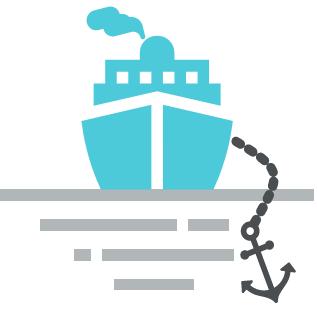Use the search below to find question.
Amount of questions: 45 .
Right answers marked with this sign
What is the name of the type of stretcher often found on board?
SOLAS stretcher.
Hart Imco stretcher.
Neil Robertson stretcher.
A companion of yours on a ship falls down a flight of stairs and thinks he may have broken his leg. What’s the best thing you should do?
If you are doing heart compression, approximately how many compressions per minute is about right?
compressions per minute .
compressions per minute .
compressions per minute .
compressions per minute .
What is meant by an open fracture?
A casualty has been injured by crushing his hand in an item of machinery. Which of the following should never be done?
Which of these drugs might be given to reduce severe pain?
When internal injury is suspected, which of the following should NOT be done?
What is meant by the term compound fracture?
Which of these would be the best action if you suspected a casualty was choking?
What damage could occur if first aider’s hands are placed at the tip of the sternum during heart compressions?
Which of these is considered the best way to control severe bleeding?
Which of these is best when you suspect that a casualty has fractured a bone?
Approximately how much blood is contained in the human body?
litres .
litres .
litres .
litres .
Which of these is a Thermal Protective Aid?
Abdominal Thrust is the name of a technique used to attempt to force air out of a choking casualty’s lungs. How is this technique performed?
If an injured person’s pulse cannot be felt at the wrist, where on the body should the pulse be taken?
Where should the hands of the first aider be placed when doing heart compressions?
Clavicle ) joins the breast bone (Sternum ).
cm nearer the head than the lower end of the breastbone (sternum ).
Which of these is the most effective method of artificial respiration?
If the heart of a casualty has stopped, approximately how long will it take before the casualty is likely to suffer brain damage?
seconds .
minute .
minutes .
minutes .
The cardiovascular system refers to what parts of the body?
A crew member has fallen from a height of about 5 meters and though conscious cannot feel any pain in his limbs. What should you do?
An unconscious seaman is lying on his back and is not breathing. What’s the first thing you should do?
Which of the following conditions would indicate that a casualty was dead?
What is a resuscitator?
A shipmate touches some live electrical wires and collapses unconscious. What’s the first thing you should do?
Which of these describes basic life support?
In the absence of a Doctor, how long should artificial respiration and heart compression be continued?
minutes you should stop CPR .
CPR can be stopped.
CPR after 20 minutes , it is useless to continue.
What is hypothermia?
degree °C .
degree °C .
degree °C .
What types of drugs are permissible to take without permission?
What would you do if you see a man fall into a cargo hold?
What kind of first aid should be given to a person with frostbite?
What is the rhythm when performing mouth-to-mouth ventilation in combination with chest compressions by one first aider only?
How would you ease the pain for someone who gets his finger tip stuck in a hatch cover?
minutes and then puncture the nail with a preheated needle.
minutes and then puncture the nail with a needle.
How can asthma attacks be triggered?
A heavy fall or a severe blow to the upper part of the abdomen can upset the regularity of breathing. What are the symptoms?
The treatment for muscle strain may be remembered as RICE . What is RICE ?
Reflate – Inject – Cooperation – Elevation .
Rest – Inject – Care – Evaluation .
Rest – Ice – Compression – Elevation .
Reflate – Ice – Compression – Estimation .
What is the first sign and symptom of a heart attack?
What are the symptoms of someone about to faint?
How can you prevent a patient from fainting?
The unconscious or recovery position should be used for a casualty who is breathing but unconscious. Why?
What is the skin colour of a patient in shock?
When acting as a watcher or lookout at a cargo hold and men below show signs of distress, what must you do?
B. A. set and enter the space.
Sun rays and light reflected from a bright surface (e. g. snow) can cause damage to skin and eyes. What is this type of burn called?
Unconscious casualties who are breathing and whose hearts are beating should be placed in the Recovery Position. Why is this position so important?
When performing chest compressions, where on the casualty’s body do you place your hands?

